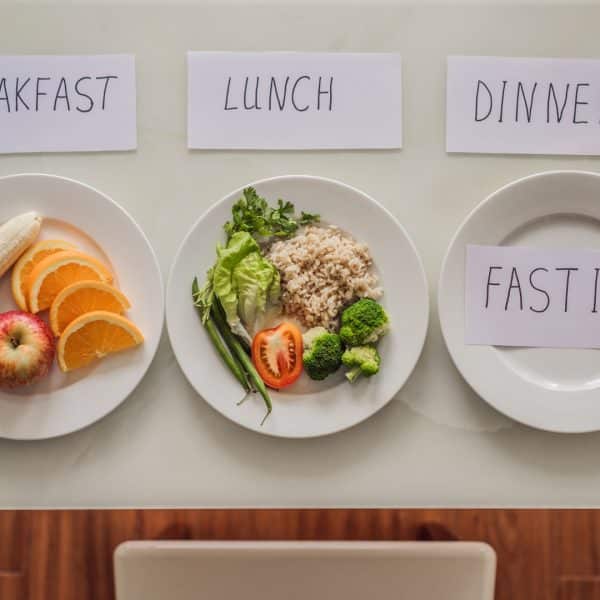Hey there, friends! Life’s journey after forty is like a good book that you can’t put down – every chapter filled with wisdom, challenges, and a fair bit of unexpected twists. And as we navigate through these pages, health often emerges as a compelling subplot.
We’ve all been there, haven’t we? The moment when our body’s narrative doesn’t quite sync with the vitality we feel inside.
It’s like that well-loved recipe book missing a vital ingredient – leaving us wondering what’s missing to make it just right.
Enter the fasting mimicking diet – the nutritional buzz around town that’s got us all curious. It’s like discovering a hidden gem in the attic, waiting to be explored and embraced.
This isn’t about drastic makeovers or quick fixes; it’s about tuning into our body’s needs, embracing the wisdom that comes with time.
It’s a bit like those winding coastal roads we love, offering a scenic view of health and well-being. Sometimes smooth, sometimes a bit bumpy, but always leading us on a journey toward better understanding.
So, let’s gather around our proverbial kitchen table, pour ourselves a warm cup of tea (or coffee, for the early birds), and cozy up for a heart-to-heart chat about this intriguing concept.
It’s about flipping through the pages of health and vitality, uncovering layers of understanding, and savoring the journey to a healthier, more balanced you.
What is a fasting mimicking diet
Alright, imagine a diet that’s like that friend who says, “Hey, why don’t we go for a walk?” instead of dragging you to a boot camp class.
That’s the fasting mimicking diet – a health hack that nudges your body gently, rather than with a frantic kick, toward recharging mode.
The idea here is to give your body a taste of fasting’s perks without the daunting “no-food” sign hanging over your head.
This isn’t about saying goodbye to meals entirely; it’s more like hitting the pause button on your usual eats for a few days, while still having a small, curated selection of foods to keep your body fueled.
While the details of the diet may vary, here’s a general breakdown of the foods typically recommended for this regimen:
- Low-Calorie, Nutrient-Dense Foods: The diet usually includes plant-based, whole foods that are high in nutrients but low in calories. This can encompass foods like vegetables, particularly leafy greens, carrots, and other colorful veggies.
- Healthy Fats: Some versions of the diet may include small amounts of healthy fats, such as nuts, seeds, olives, and avocados, to ensure the body receives essential fats without significantly elevating calorie intake.
- Proteins: For protein sources, options might include plant-based proteins like legumes, seeds, or limited portions of fish. Protein intake during the fasting mimicking diet is generally limited to moderate amounts to support muscle maintenance.
- Complex Carbohydrates: Whole grains and legumes, such as lentils, chickpeas, or quinoa, might be part of the diet, offering a source of sustained energy without spiking blood sugar levels.
- Restricted or Minimal Animal Products: This diet often focuses on plant-based foods, with limited or no inclusion of dairy or meat products, emphasizing a predominantly plant-centric approach.
The goal is to provide the body with the necessary nutrients while keeping caloric intake low enough to trigger the fasting-mimicking effects.

Benefits Of The Fasting Mimicking Diet
Now let’s dive into the good stuff – the perks of the fasting mimicking diet.
- Metabolism Boost: You might notice things like improved metabolism, a bit more mental clarity, and even a sprinkle of increased energy. When you take a break from your usual eating routine and scale back on calories for a few days, it’s like giving your body a surprise visit to the metabolism gym. Your body might react by kicking its engine into a higher gear to burn energy more efficiently. By shaking things up a bit with this diet, your body gets a chance to readjust its energy usage. Think of it as a mini tune-up, fine-tuning your metabolism for better efficiency.
- Hormonal Balance and Weight Management: Ladies, this diet might have a few extra perks for you. It could help keep hormones in check, support managing weight, and might even give your skin that extra glow.
- Better Blood Sugar Control: When you step back from your normal routine, it can have a positive impact on how your body handles sugar. It’s like creating a more stable environment for your blood sugar, allowing it to maintain a steadier pace without sudden spikes or drops. By taking a pause from constant eating, your body gets a chance to regulate its response to sugar more effectively. This means a potentially smoother journey for your blood sugar, reducing the ups and downs, and creating a more balanced path.
- Support Heart Health: This diet might help with factors that impact heart health, like managing cholesterol levels and reducing some of the strain on your heart. The fasting mimicking diet could potentially offer a bit of relaxation for your heart, reducing its workload and contributing to a healthier beat.
Drawbacks Of The Fasting Mimicking Diet
As with most things, there’s always a downside.
Limitations of the Diet: One thing to note is that this diet might not be a walk in the park for everyone. It involves cutting back on calories for a few days, and it might not suit everyone’s taste.
Plus, sticking to the low-calorie regimen might feel challenging for some, so it’s essential to be mindful of your comfort level.
Possible Health Concerns: Now, health is our priority, right? For some folks, especially those with certain health conditions, diving into this diet might not be the best move.
If you have health issues or concerns, it’s crucial to have a chat with your healthcare provider before giving it a go. Safety first, always!
Things to Be Mindful Of: Jumping into any new diet might require a bit of planning and self-awareness. It’s good to be prepared for potential side effects like those annoying hunger pains!
Also, if you find yourself struggling or feeling unwell, it’s okay to hit the pause button on this dietary journey.
While the fasting mimicking diet has its potential, it’s crucial to be aware of the challenges it might bring. Checking in with your health professional and being mindful of how your body responds is key to making it a smooth sail.

Is it Safe
- Stick to the Plan: The diet typically involves consuming specific low-calorie, nutrient-rich meals for a predetermined number of days (often five). It’s essential to strictly follow the recommended meal plan outlined by your healthcare practitioner.
- Stay Hydrated: Hydration is key. Drinking plenty of water during the low-calorie days is crucial for your body’s well-being and to prevent dehydration. Aim for at least 8-10 cups of water per day, or as advised by the diet guidelines. Mineral water, sparkling mineral water, and spring water are good options to try so you can get all those beneficial minerals in.
- Preparation and Planning: Pre-planning your low-calorie days can be a significant help. Organize your meals and ensure you have the necessary foods and resources to stick to the diet guidelines.
- Health Considerations: It’s essential to acknowledge your health status. If you’re pregnant, breastfeeding, have certain health conditions or are on specific medications, this diet might not be suitable for you. Always check with your doctor.
- Monitor Your Body: Pay attention to how your body responds. If you experience severe discomfort, dizziness, or any adverse reactions, it’s crucial to stop the diet and consult a healthcare professional.
Is It Hard To Follow
Let’s dive into what makes this diet a breeze or a bit of a challenge, and how to navigate through it smoothly.
Challenges in Following the Diet:
Adhering to the fasting mimicking diet might pose a few challenges, especially for those new to this approach:
- Calorie Restriction: Cutting back on calories for several days could be a bit tough for some. It might trigger hunger pangs or feelings of low energy, which can test your willpower.
- Social Aspects: Social gatherings or daily routines may not always align with the diet’s low-calorie days, making it a tad inconvenient.
Tips to Make it Easier:
- Preparation is Key: Plan your meals ahead of time for the low-calorie days. Having the necessary foods on hand will make it easier to stick to the diet.
- Stay Occupied: Keeping yourself busy during low-calorie days can help distract from hunger. Engage in activities, hobbies, or work to take your mind off food.
- Gradual Transition: If you find it challenging, start with a shorter or modified version of the diet, gradually increasing the number of low-calorie days as your body adjusts.
- Take Digestive Enzymes: Digestive enzymes may help soothe your tummy and reduce any unpleasant symptoms like gas, bloating, or abdominal pain. As the body adjusts to a different eating pattern, the use of digestive enzymes might support the transition to a reduced-calorie diet, aiding the body in processing the smaller amount of food being consumed.
- Embrace The Cold: Cold exposure has been linked to the activation of brown fat, which is a type of fat that burns calories to generate heat. When combined with a low-calorie diet, cold exposure might potentially enhance the breakdown of fat for energy. Both cold exposure and fasting have been associated with a decrease in inflammation. Combining the two approaches might potentially offer synergistic effects in reducing inflammation markers within the body.
Conclusion
We’ve unpacked what this diet offers – potential benefits, a few hurdles, and ways to tackle it safely and practically.
This diet isn’t a walk in the park for everyone. Those low-calorie days? They might throw you a curveball, and practically, it might not always sync with your schedule. But hey, it’s not about perfect; it’s about progress.
So, if you’re eyeing this diet, kudos to you for taking the leap! Stay practical, be your own health advocate, and remember, it’s your journey. Every step towards a healthier you matters, whether it involves this diet or not.
Here’s to your health journey, your strength, and your decision-making. Cheers to the steps you take towards a healthier, happier you!
Ready to kick autoimmune disease to the curb? Then get ready for my upcoming monthly membership created just for you!
Get access to a treasure trove of tools, monthly brain-boosting trainings, and a community of fellow warriors all set to conquer autoimmune hurdles together.
Be the first to know when the doors swing open. Join the waitlist now and get ready to high-five progress, find your squad, and let the journey to better health begin!
Sign up for our waitlist, and let’s rock this journey together! 🚀💪
***Disclaimer: This post is for informational purposes only and should not be construed as medical advice***


